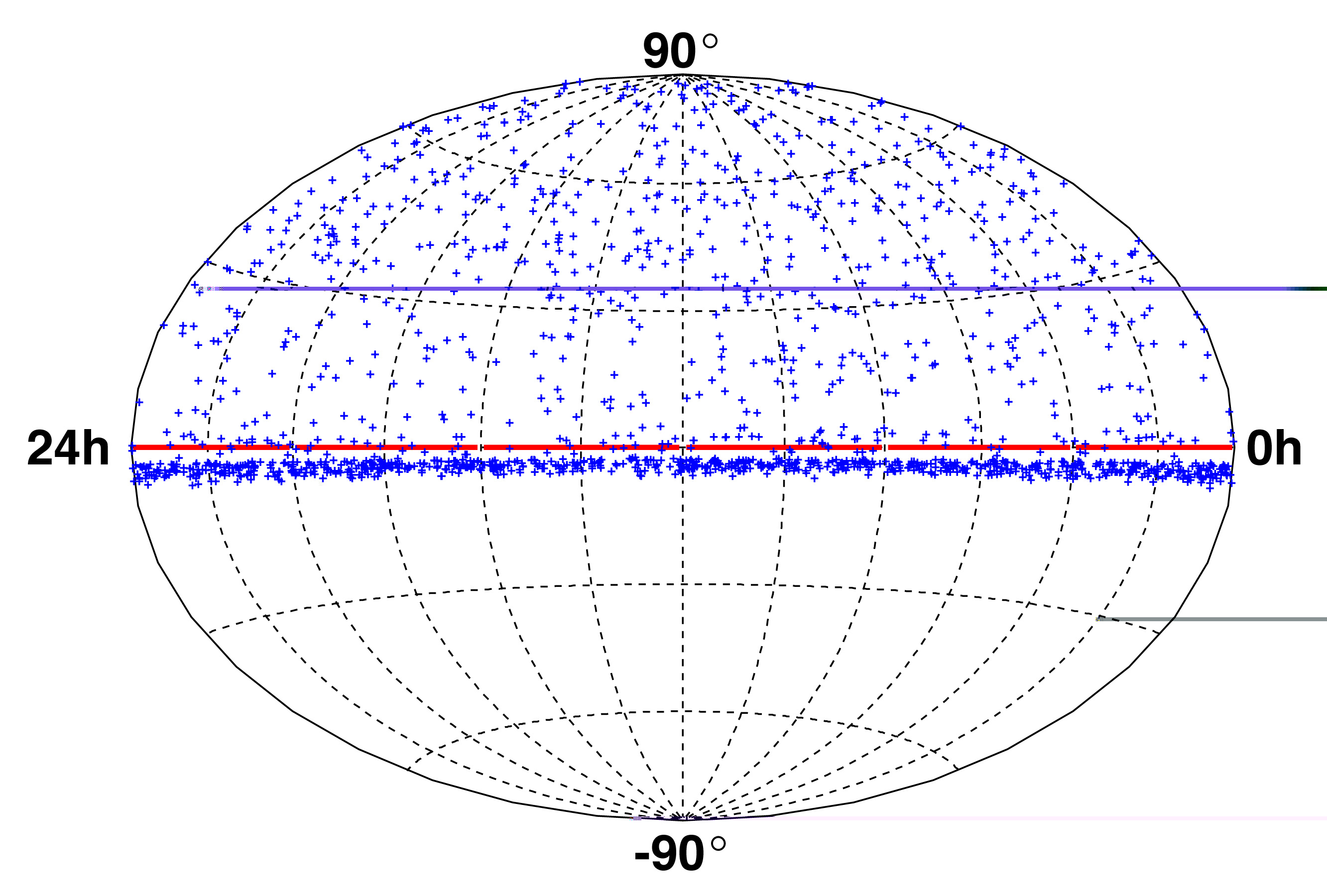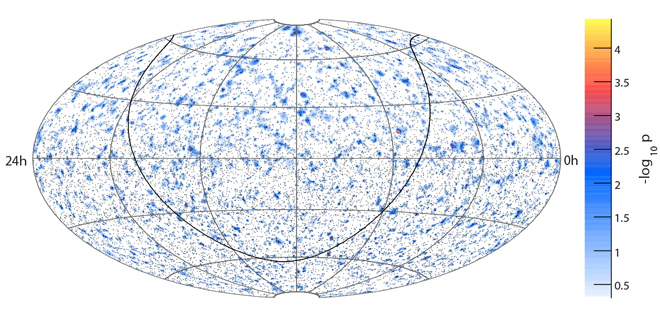Lab Exercise 9
The Neutrino Sky
Read Section 9.11 and use the figures to answer
Questions 20 and 21.


Figure 9.20 : Scientists are melting holes in the bottom of
the world. In fact, several holes have been melted near the South Pole,
and they are now being used as astronomical observatories. Astronomers
initially with the Antarctic Muon and Neutrino Detector Array (AMANDA),
and now IceCube, have lower into
each vertical lake a string knotted with basketball-sized light detectors.
The water in each hole soon refreezes. The detectors are sensitive
to blue light emitted in the surrounding clear ice. Such light is expected
from ice collisions with high-energy neutrinos emitted by objects or explosions
out in the universe. Analyses of data from the AMANDA II and IceCube detectors have
recently been used to create the first map of the high-energy neutrino sky.
(Click on the above images for higher resolution versions)
Several UA researchers are working on the exciting IceCube project! Ask your lab instructor for more information.


Figure 9.21:
The first maps of the high-energy neutrino sky, produced with data from the
AMANDA II and the newer IceCube Telescopes at the South Pole provides a tantalizing glimpse
of many potential point sources of ghostlike cosmic neutrinos. The AMANDA
map was released on July 15, 2003, and the Ice-Cube map in December of 2010. WARNING: This
map is not in galactic coordinates, but in Right Ascension and Declination.
Last modified 2013 03 10



